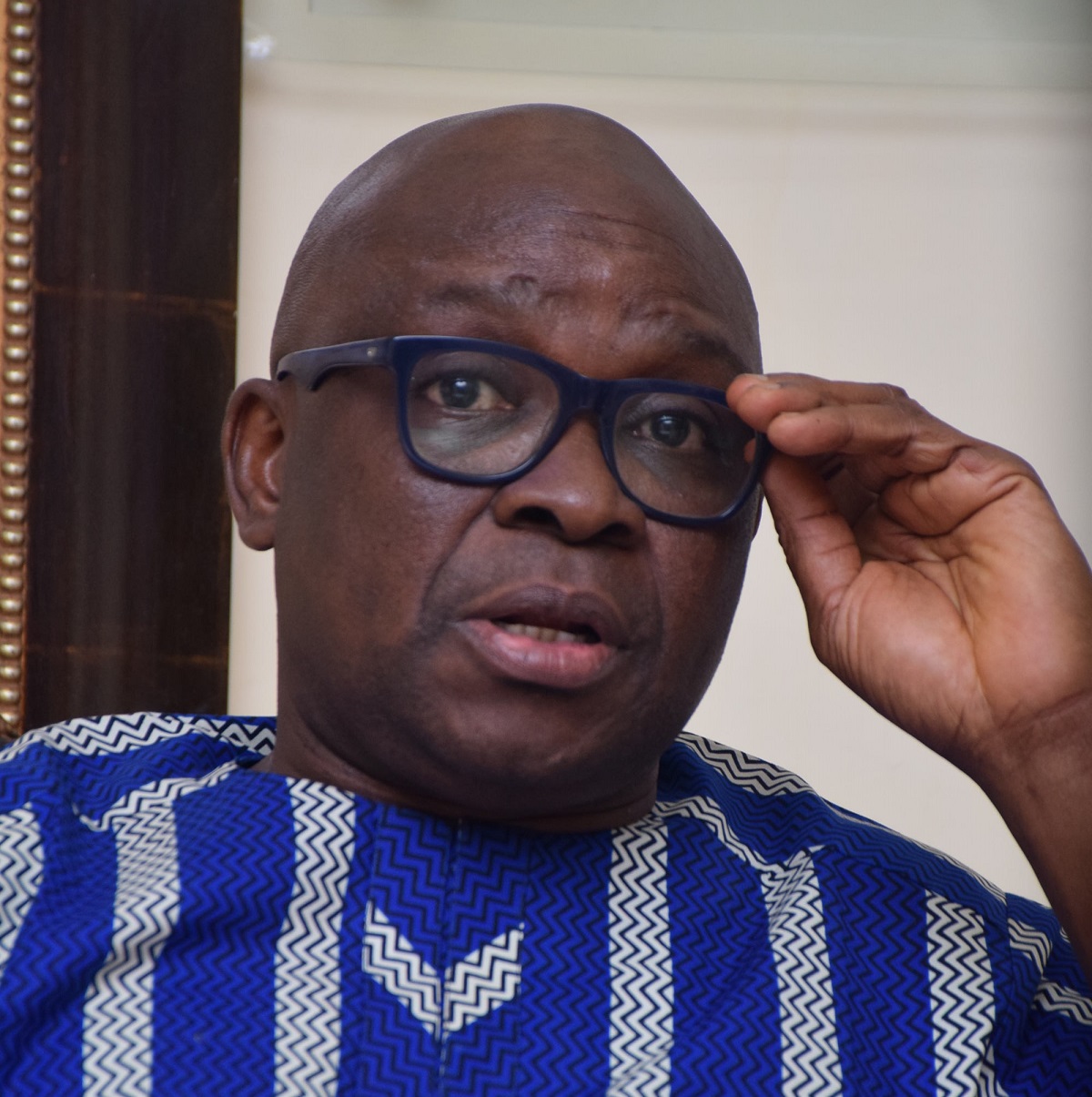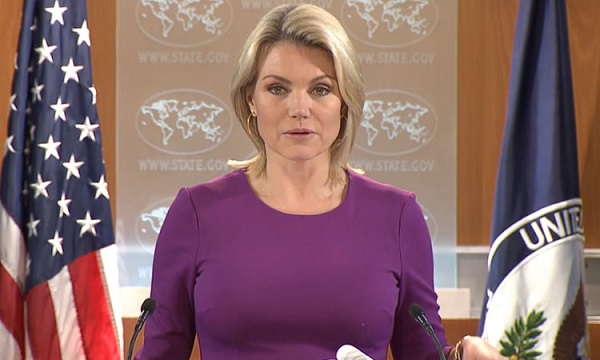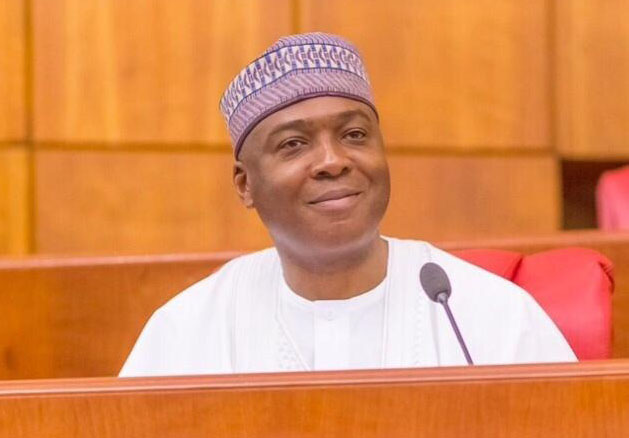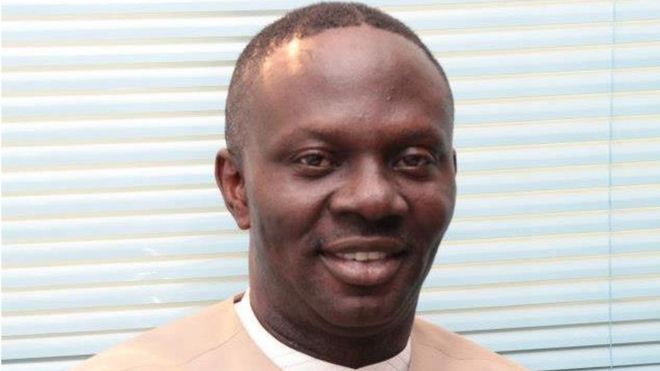There are 4.4 million Nigerian children in desperate need of humanitarian assistance in the northeast. Reporting from five internally displaced persons (IDP) camps in Borno state, ABIOSE ADELAJA ADAMS finds that hunger and lack of teachers are major barriers to education.
STORY HIGHLIGHTS
- Children engage in hawking, block-making, carpentry to stay alive
- School opens late and closes 11am owing to diminishing attention span
- Food rations to the IDPs last not more than 15 days
- Teachers complain of lack of transport fare to teach at camps
It was very cold and windy that Friday morning late January. It also coincided with the day the Danish Refugee Council does its monthly distribution of food rations to not less than 85,000 internally displaced persons (IDPs) currently taking refuge at Africa’s largest camp — Ngala.
At the entrance of the camp, by a space large enough to be a football pitch, the women sat in rows, their colourful chiffon scarves draped from their heads down to the hips.
Meanwhile, the men were squatted on the floor opposite them, waiting for their household to be called. The teenagers packed their barrows by the field anticipating to wheel home the miniature bag of rice and five litres keg of oil — foodstuff that will last for only 15 days and no more, in fact, even less.
Advertisement
TheCable immediately located the only school in this camp. Of the six classrooms and one child-friendly space, only one had a teacher. She was teaching the students Arabic. The pupils, seated on the floor mat, shoeless, chanted back in response. Most of them were boys attired in kaftan with their turquoise blue school bag, carrying the UNICEF insignia, strapped to their backs.
The other five classrooms were empty, and the only one with few loitering pupils had no teacher. The answer to where all the children were was out there, over the wire fence that demarcated the school from other structures. It was almost as if by default, the school doesn’t exist on monthly food distribution days as right opposite the school were scores of children indulging in one form of trade or the other.
FOOD OR SCHOOL — PICK ONE
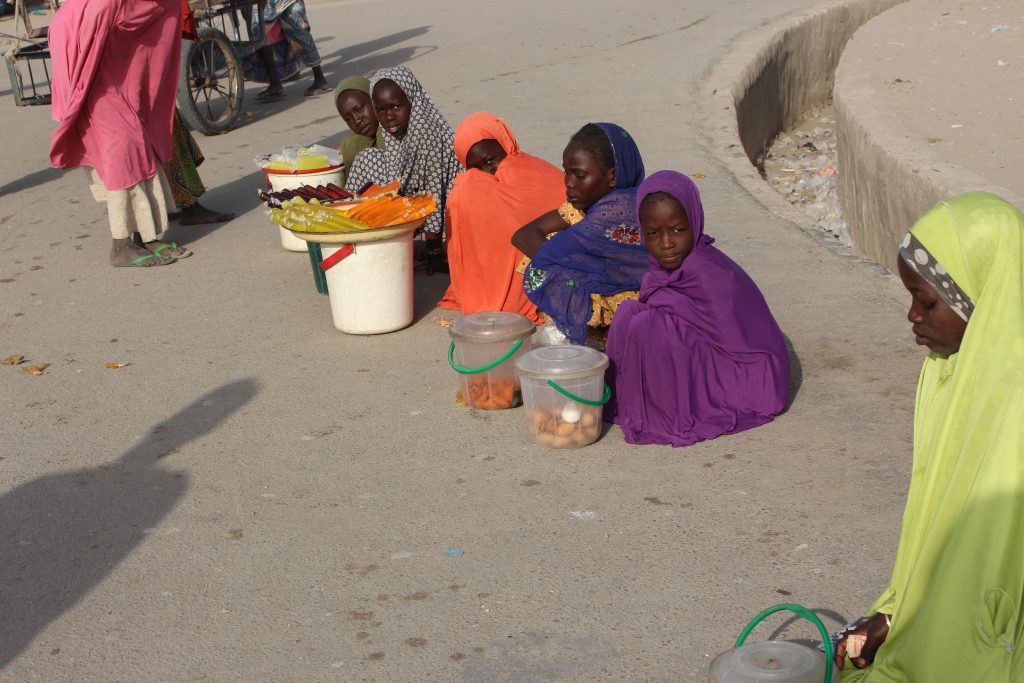
Meimuna, a seven-year-old girl, whose face was already flaking from the harmattan, was squatted over a transparent bowl of kose (bean ball or akara), by the main road. Her two other sisters were also selling a local drink tied in a yellow or red polythene bag. Her both hands were tucked in her brown hijab. When asked why she was not in school at 8am, she forced a smile that made her lower lip blister and spot blood. She attended to a buyer, stared at me for half a second and then withdrew into her hijab, head tucked between her laps. No answer.
Advertisement
Five quick steps away from her was Haruna Babagana, a boy o about 14, happily pushing a wheelbarrow.
“I have to run errands for my mother so she can cook for us. I like school but my mother will say we should look for food first,” he said through an interpreter.
A kilometre away was ten-year-old Hauwa matting dried sticks of the wheat plant, with her mother. The mat is used to make shelters (in the event they do not get houses or canvasses from donors). “It costs N1500,” the mother said. Hauwa gave no answer. Beside him was her brother Audu molding blocks from the clay soil and straw. Several children milled around me obviously in need of something.
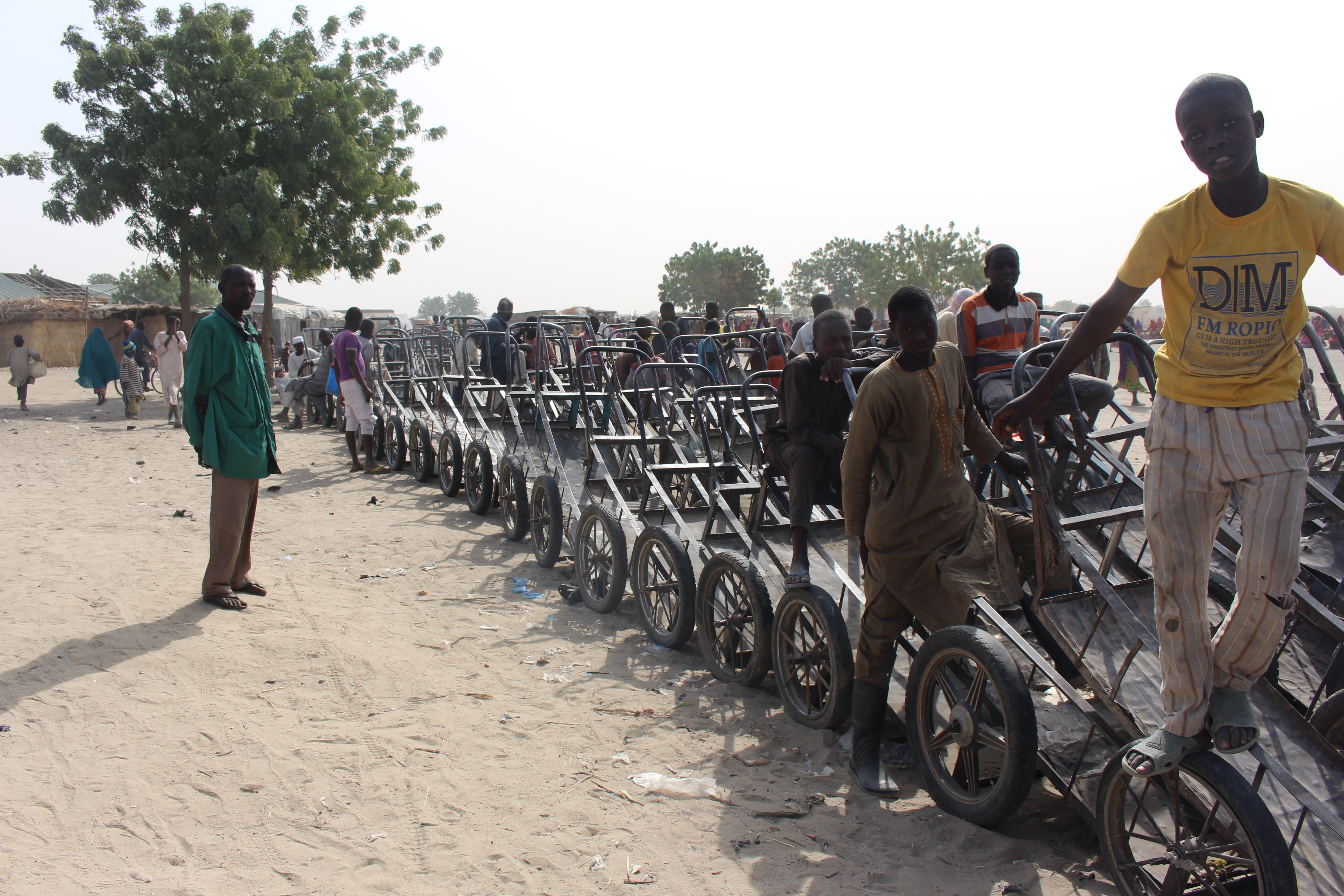
Back to the school, there was not even a head teacher on the ground to speak with except the community camp manager, who said he was speaking the mind of all IDPs being an IDP himself.
Advertisement
“If we are hungry, how can we send our children to school? We know education is paramount, but we are hungry and we have to fend for ourselves. The food they give us here cannot sustain us. It only lasts for 15 days,” he said.
Ngala local government area, a border town between Nigeria and the Cameroon town Fotokol, was captured by the insurgents on May 6, 2014. In one midnight onslaught, several property was destroyed and people killed, leaving inhabitants no choice but to flee to Cameroon. It remained under the Boko Haram’s caliphate until it was liberated by the Nigerian military on January 20, 2016.
Absent teachers, empty classrooms
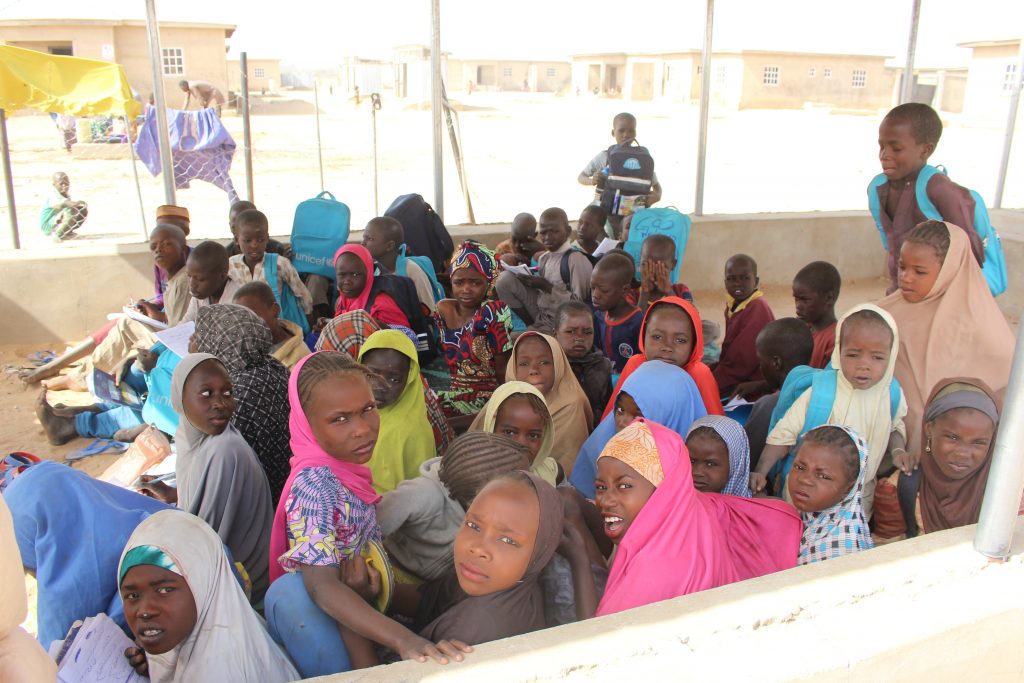
TheCable also visited Gubio camp, a refuge for an estimated 20,500 people from eight local government areas of Borno. Just like Ngala, the school is a tent which had been partly destroyed by the wind. According to the register on the wall of the headmaster’s office, there are 6,750 children enrolled in the school.
Advertisement
“The school is lacking many things,” Musa Haman Ramadan said. He is the volunteer headmaster who fled to the camp when his local government area was attacked. The man, who appeared to be in his mid-50s, opened up profusely, hoping the government will come to their immediate rescue.
“The school started in 2014, and it is suffering from so many setbacks. One of them is that there are not enough teachers and the school is lacking instructional materials. We thank Allah for what UNICEF is doing, but it is a big challenge for us. We have 13 classrooms with over a 100 students and there are no teachers. So it is difficult to control the children,” he said.
Advertisement
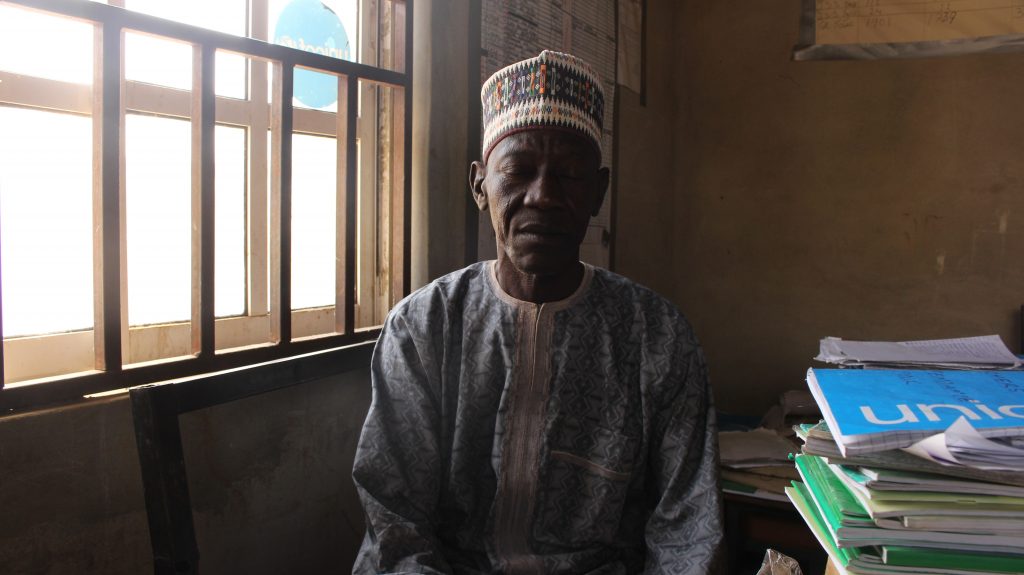
His Adam’s apple bobbed as he swallowed hard and continued: “We have many volunteer teachers especially from the IDPs and the military. Because this place is very far from the town, the payroll teachers from the local government education authority don’t like to come. So we said they should come once a week.”
Disenchanted Teachers
One of the reasons he gave for their absence is a lack of transport allowance.
Advertisement
“They say they have no transport fare.” Babagana Burka, the camp secretary representing the State Emergency Management Agency (SEMA), confirmed the headmaster’s complaint. “The condition of education is very poor in the camp. We lack teachers, as well as reading and writing materials. The UNICEF is trying. They are the ones that built the school. If not for the volunteer teachers, things would have been worse, yet nobody is paying the volunteers. They are just sacrificing themselves.”
According to him, they have written letters to the local education authorities to send teachers to the camp especially for the benefit of the children who are also from their local government areas, but there has been no positive response.
Advertisement
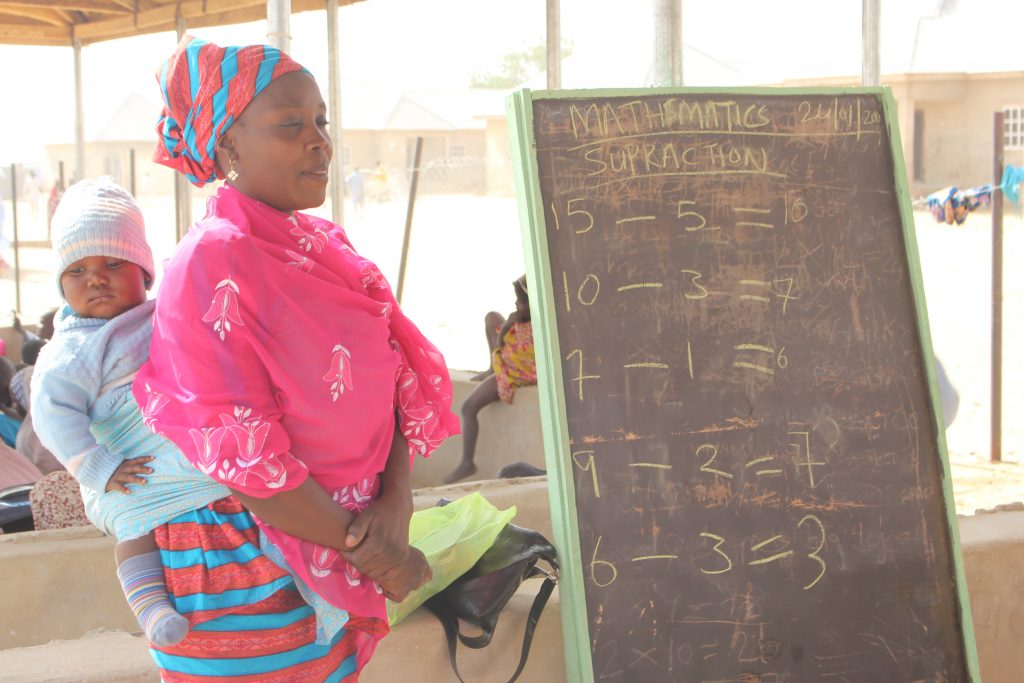
“They said they need accommodation, so we have built 16 rooms for them so they can stay, but up till now, we don’t know why they have not shown up,” he said.
Mohammed MK, the education secretary of Marte, one of the freshly liberated local government areas, told TheCable that the teachers are supposed to go the camps with their own money.
“Nobody gave us a kobo to go to these camps (which are several kilometres away from our place). We use our money to fuel our vehicles to Gubio, Bakassi and Munguno camps. The teachers are supposed to utilise their money from their salaries to go and teach. There is no provision for allowance,” he said.
TheCable found that the salary being paid a ‘level 3 step 1’ teacher at the local government is as low as N10,000 per month, because the local government has not implemented the minimum wage of N18,000. Mohammed, however, said salaries can be high or low depending on teacher’s qualification.
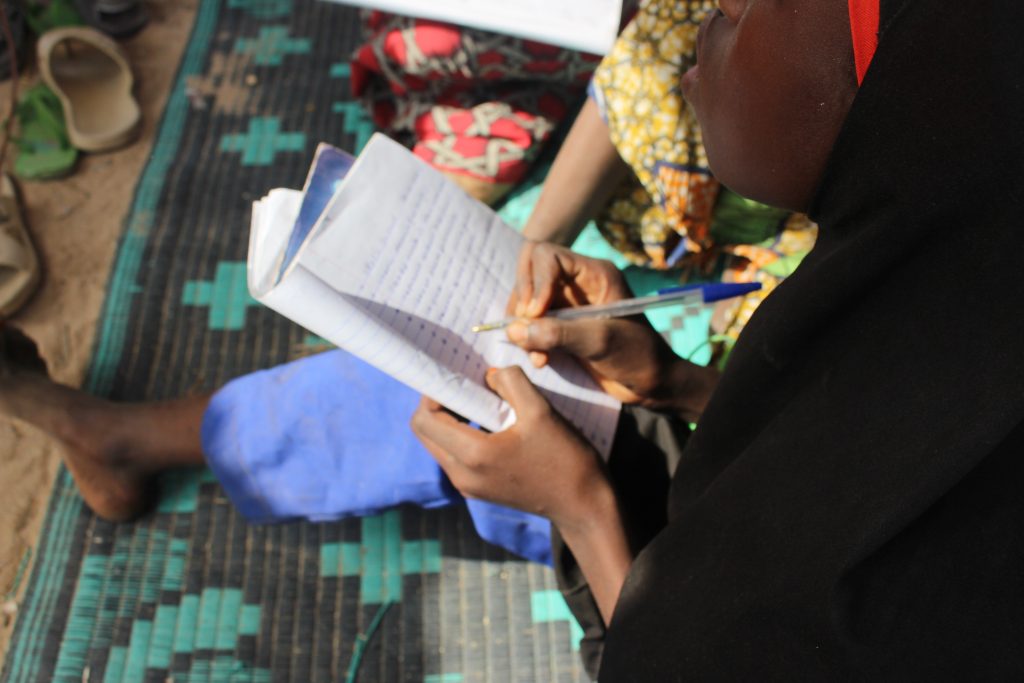
If there are schools and no teachers, how can learning take place?
UNICEF reported that in 2017, it collaborated with the Borno State Universal Basic Education Board (SUBEB) to train 407 primary school teachers from 11 local government areas on psycho-social support, pedagogical skills and effective classroom contents delivery. Sixty thousand children are expected to benefit from improved education through these training, but these seem to exist only theoretically.
Indiscipline at school
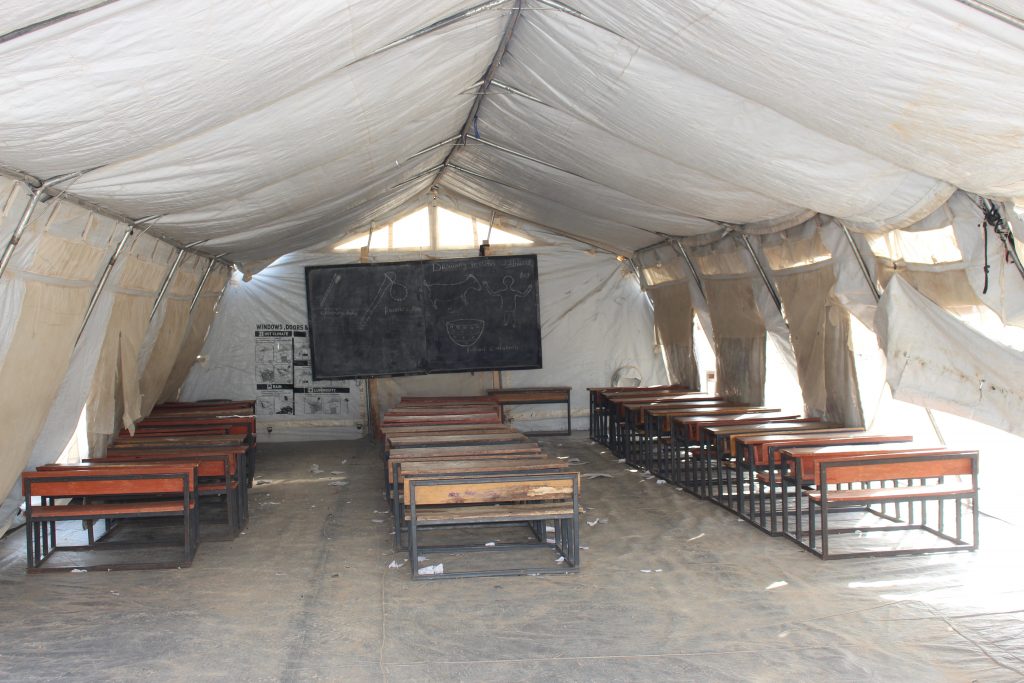
It was a familiar story of woe at the Bakassi camp which plays to host to about 5,000 people from five local government areas. There are two large tent schools with a huge, white canopy bearing UNICEF crest. At 11 am, there was no single student found.
A volunteer teacher, Ishaya Ibrahim, said: “The children do not show any enthusiasm towards learning. Their lack of enthusiasm dampens the spirit of the teachers.”
Ishaya, on whose uniform is a one-star ranking from the Peace Corps of Nigeria, added: “Most of them run errands for their parents. Most of them do not go to school in their local government even before they came here, so they do not know the value of education. Their parents would rather send them on errands than encourage them to attend school. We need to reorient the parents.
“Some of them will come to school by 10 o’ clock and leave with the excuse that they want to go and drink water. Since there is no water in the school, we allow then go home and they will not return again for that day.”
Overcrowded classrooms, shortage of teachers and hunger are the same problems encountered at the official IDP camp at the Teacher Village, Maiduguri.
“We have between 200 and 300 pupils in a class and we have just five teachers. We need 80 teachers,” the headmaster said.
Right now the total enrolment is 2,564, yet many of them are not coming to school. They are learning work — carpentry, farming — so they can sustain themselves to eat.”
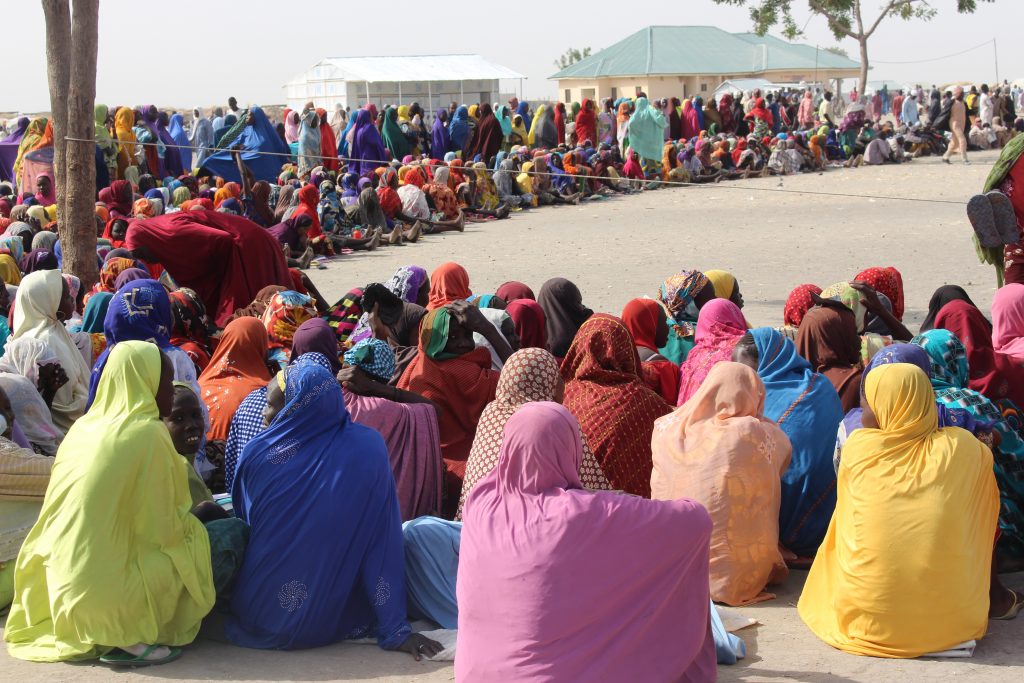
A publication of UNICEF Nigeria notes that “hunger and the absence of school feeding are negatively impacting student attendance in camps throughout Maiduguri Metropolitan Council (MMC) and Jere. As a result, many schools have reduced teaching time from 5 hours to only 2 hours per day as children are hungry”.
“We are calling on government to come and carry out the school feeding programme here,” Ishaya said.
The federal government has claimed that through its social investment programmes, it almost met its target of feeding three million primary school children in 14 states: Anambra, Enugu, Oyo, Osun, Ogun, Ebonyi, Zamfara, Delta, Abia, Benue, Plateau, Bauchi, Taraba and Kaduna. This excludes Borno and all its IDP camps.
It is reported that Nigeria has an estimated 13.2 million school-age children out of school, 95 percent (12.6 million) of which are in the northern region. This is the largest in sub-Saharan Africa.
The insurgency, which saw to the destruction of 1,200 schools and the killing of more than 600 teachers, has only exacerbated the poor index of the northeast, thus making these children in need of urgent humanitarian assistance.
What the Nigerian government is doing
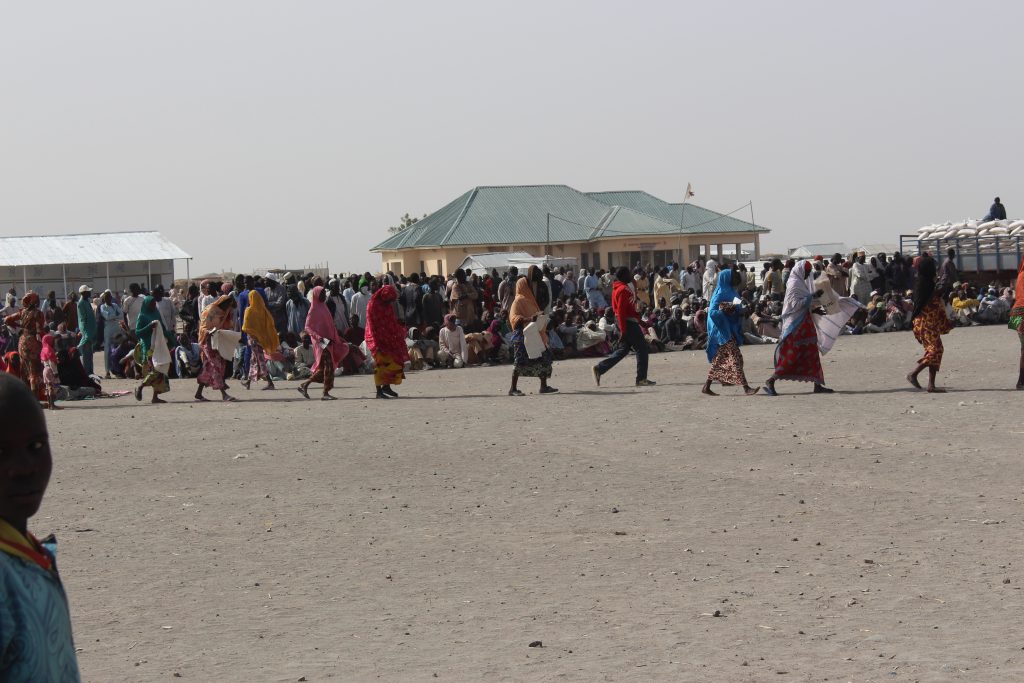
The Nigerian government, in response to the enormity of the humanitarian crisis, set up the Presidential Committee for the NorthEast Initiative (PCNI) as the primary body for coordinating all humanitarian interventions in the region. But it lacks the funding to do its work effectively.
“The funds are not enough,” the head of media and communication, Alkasim Abdulkadir, told TheCable. “In 2017, they budgeted N45 billion for our work, which was not enough. But they only released N10 billion — and that was in October 2017.”
Abdulkadir said despite that, they are doing their best to respond.
“What we do is to bring to the attention of the Ministries, Departments, and Agencies the gaps that we see in the area of education, food and nutrition, and other areas. We work with partners like UNICEF which has provided a lot of school bags, textbook and writing materials. We also work with Victims Support Fund, the private sector, philanthropist,” he said.
“It’s a herculean problem and we are calling on philanthropists, partners, government, individuals, everyone, to come and support in educating these children because if we don’t educate them they will come back tomorrow worse than Boko Haram.”
What donors are doing
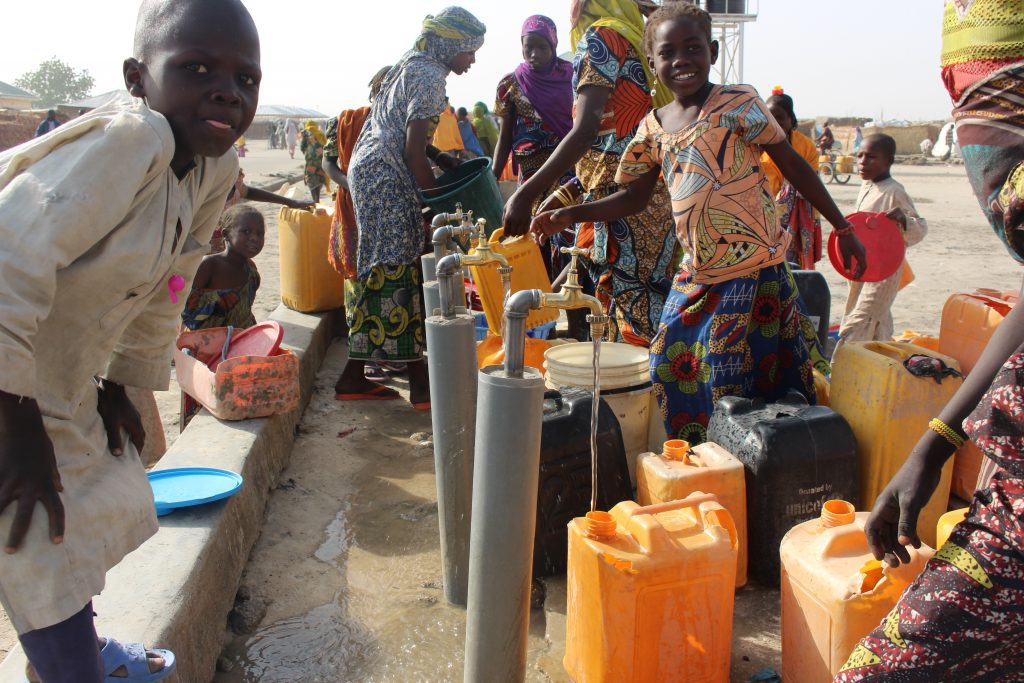
While there is no available data on what the Nigerian government has spent in previous years (despite yearly budgetary allocations), United Nations Office for Coordination of Humanitarian Affairs in Nigeria published on its website a sum of $6,185,148 donated by eight countries, namely Canada, European Commission, Sweden, Denmark, Germany, Kuwait, Norway and United States of America.
According to the publication, a sum of $7,939,959 was needed in 2017, but $6,185,148 was realised.
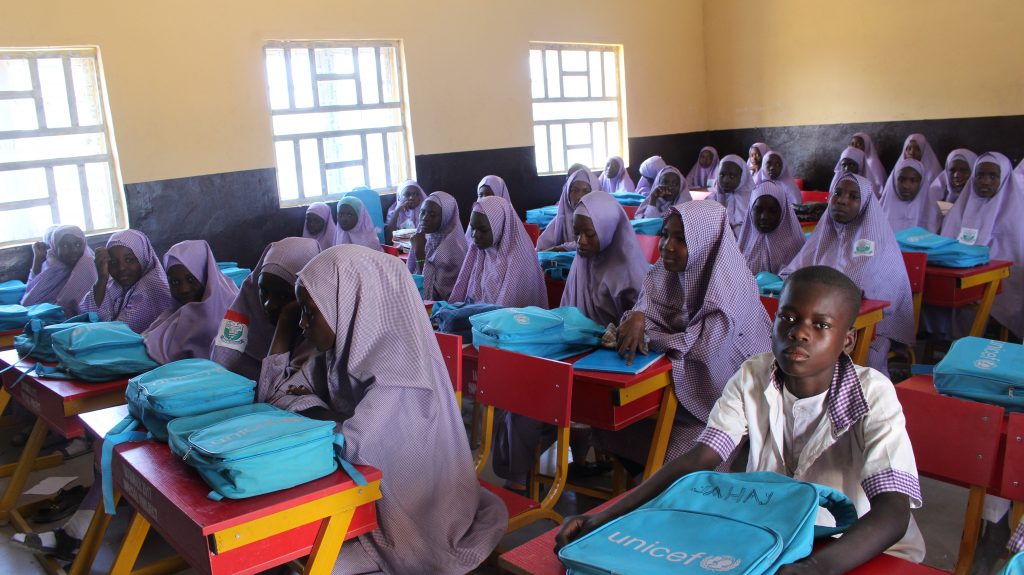
A UNICEF 2015 report on northeast intervention also shows that the organisation spent less than USD1,000,000 on education alone which is a far cry from the USD8,000,000 needed. And this is apart from the other components of its programmes such as nutrition, health, water, sanitation and hygiene and child protection. The report further shows that through the provision of classrooms and school kits, bags and writing materials across the northeast states, 38,045 children were able to access education.
Reality on ground
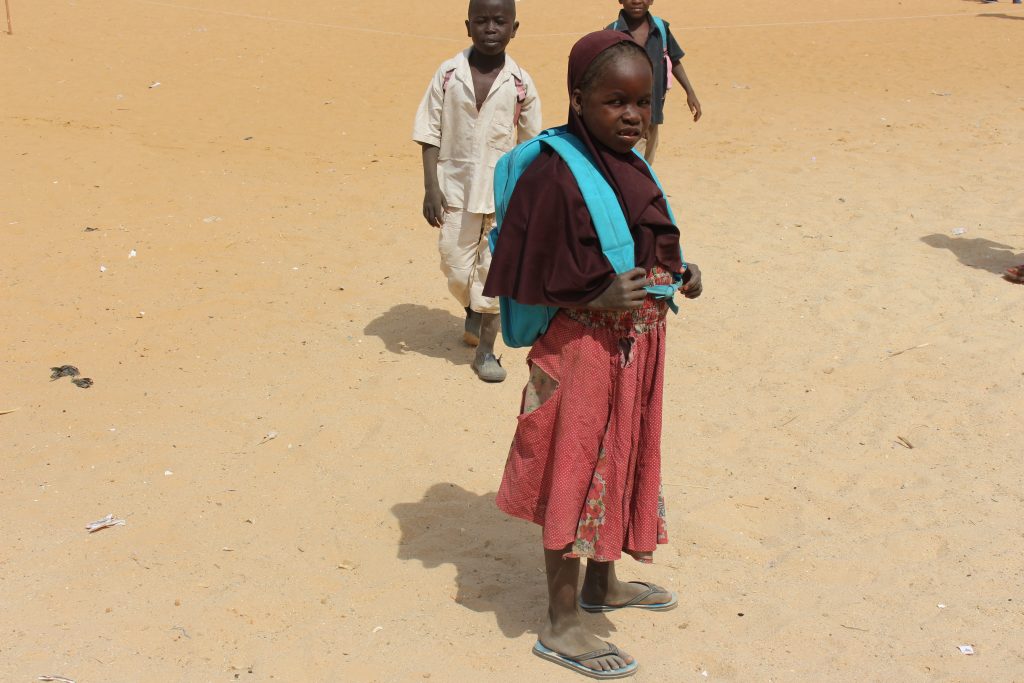
The manager of SEMA-operated Ngala IDP camp, Yusuf Gulumbo, said the state government is aware of the myriads of problems in the camp and is working on fixing them.
“All the humanitarian activities in this camp are coordinated through the Borno state government. We are also assisting with nonfood items such as pots, mattresses, blanket, and we also give condiments. The World Food Program (WFP) and the DRC do not give condiments, and you know even when they give you food, you need condiments to cook it, so it can taste in your mouth. We are also training some of the IDPs to acquire new skills to support their livelihood,” he said.
According to him, the state government releases about N260,000 monthly to take care of the IDPs.
“But this amount may not even be enough to respond to emergencies in some camps. We still go about begging for more. Remember these people are traumatised and no amount of help you can give to traumatised people is enough, so the government is doing its best,” he added.
As for the lack of teachers, he said: “We have been talking with the local education authorities for these teachers to comply or else we will stop their salaries.
“The schools in the camp are a temporary arrangement. The IDPs are meant to return to their hometown. The Borno State budget for 2018 is a budget of return and resettlement.”
Notably, the International Organization on Migration (IOM) estimates that a total of 1.57 million people are still internally displaced across the three northeast states of Adamawa, Borno and Yobe. Eighty-five per cent are in Borno.
What happens to the teachers who are displaced from their local government areas? What about the money meant for those areas which are currently uninhabitable and non-functional owing to the insurgency?
This is a special investigative project by Cable Newspaper Journalism Foundation (CNJF) in partnership with TheCable, supported by the MacArthur Foundation. Published materials are not the views of the MacArthur Foundation.
Add a comment


